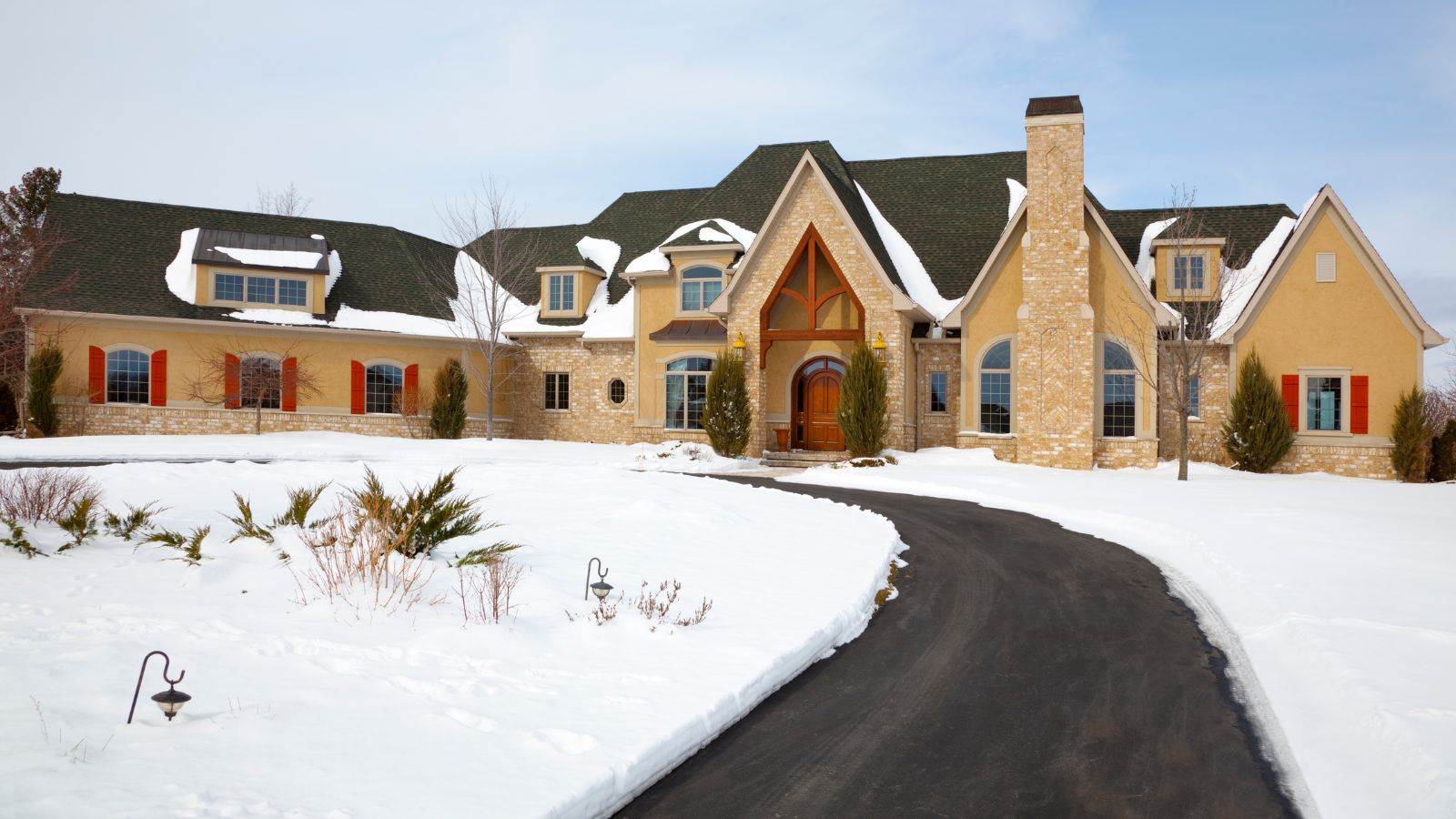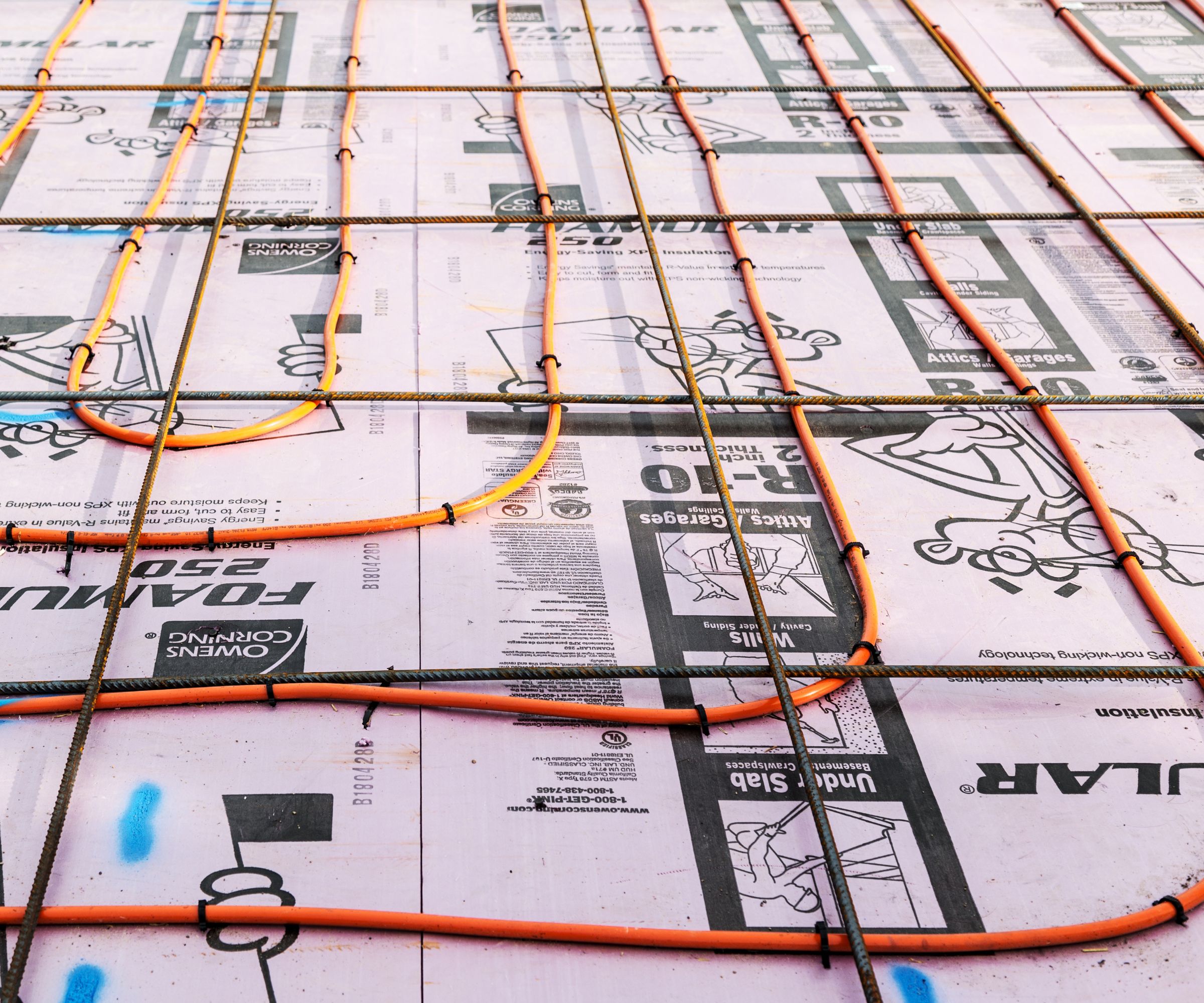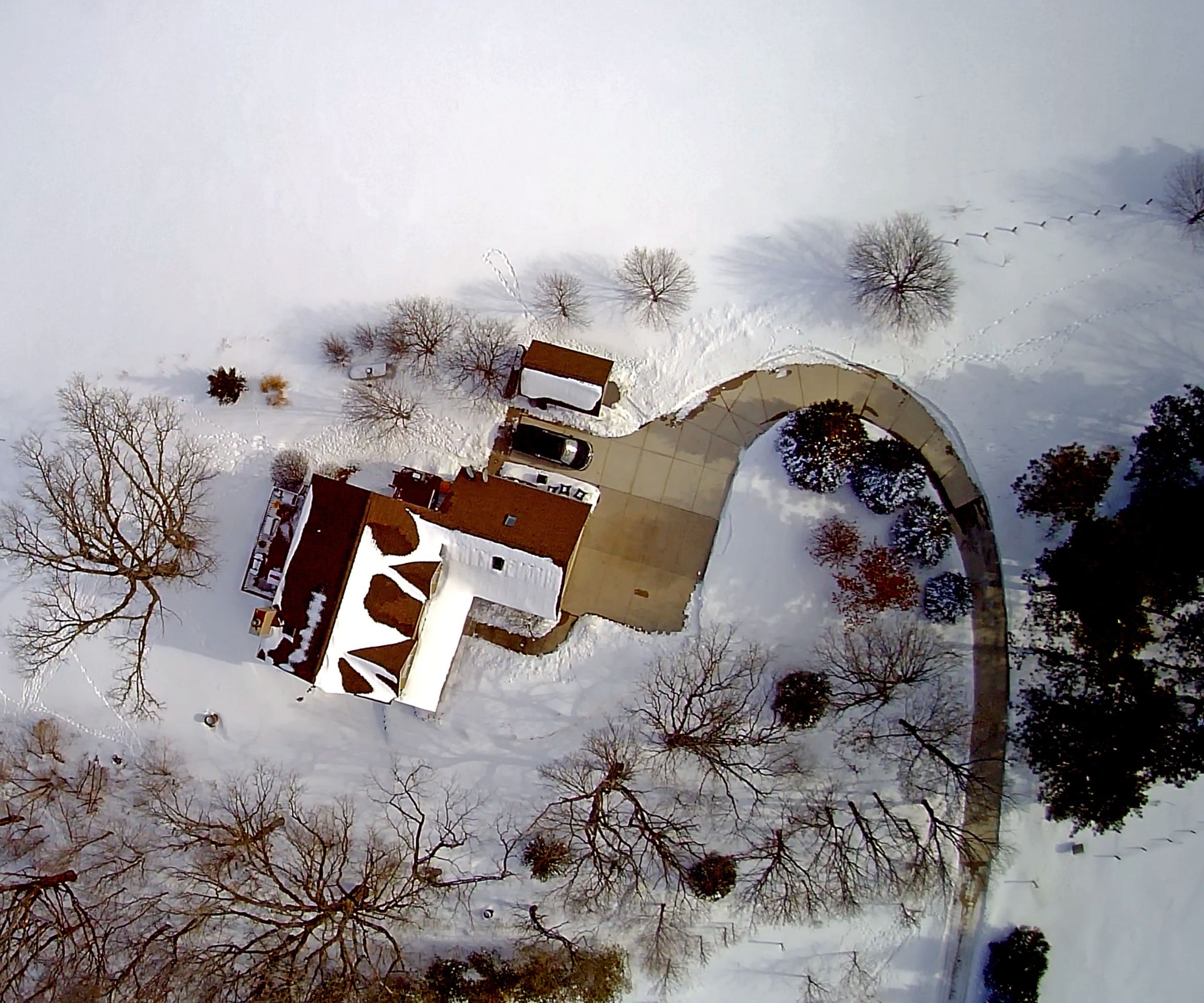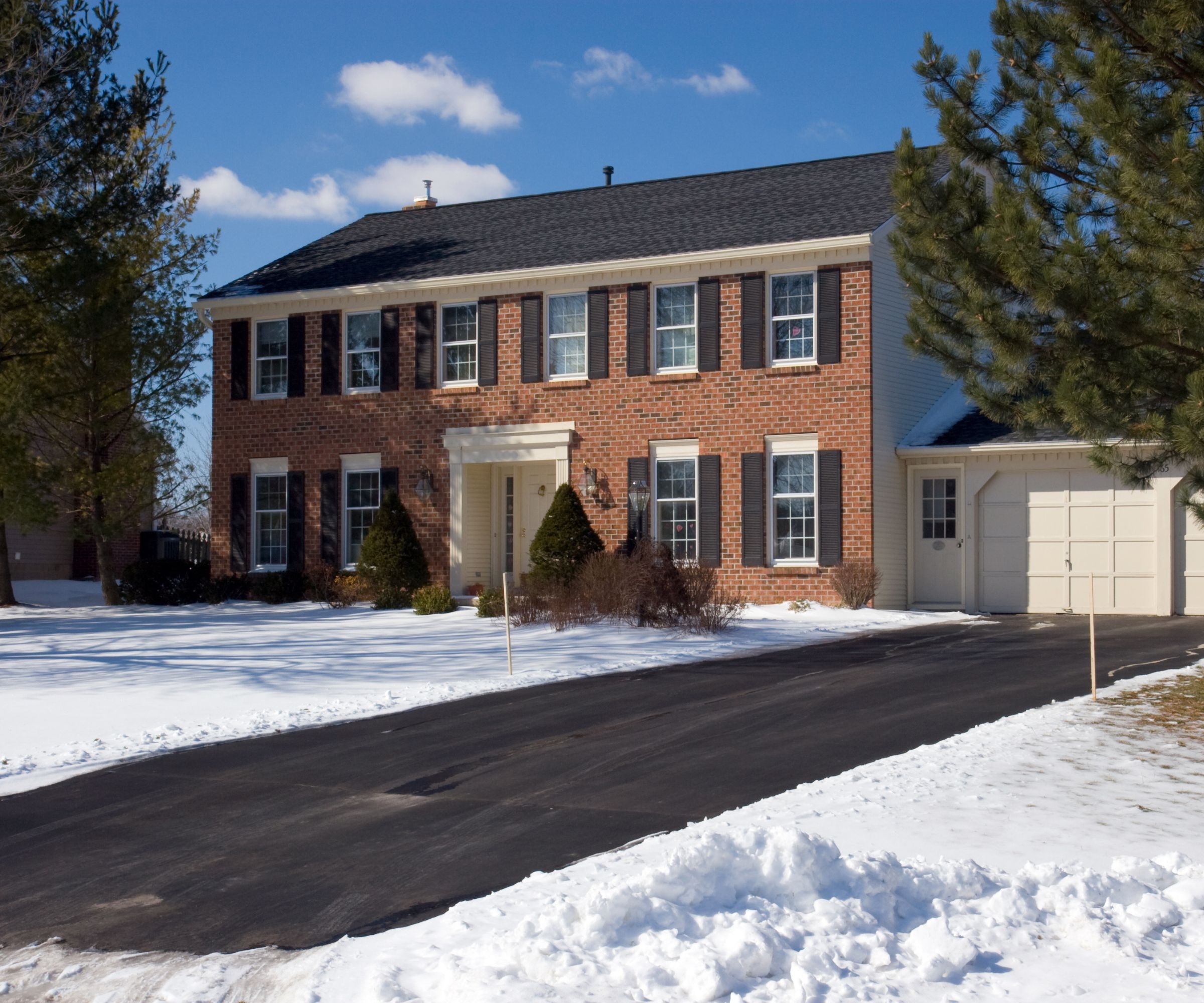How much does it cost to install a heated driveway? Experts reveal the exact cost-per-foot
Heated driveways can be lifesavers in winter – but don't spend any more than this


This year's heavy snow – and even snow in places that never usually see it – has meant that many of us are contending with snowy driveways for the first time.
Shoveling all that snow can get pretty tedious, and putting down ice melt or rock salt can wreak havoc on concrete and cars. That means it's natural to wonder if a heated driveway is for you. A heated driveway or path will melt snow before it settles, ensuring a frost-free driveway all winter long.
However, heated driveways are notoriously expensive, and they can be hard to maintain. I spoke to construction experts about the exact cost-per-foot for a heated driveway – and whether or not it's worth investing in one at all.
How much does it cost per square foot to heat a driveway?

Costs for installing a heated driveway vary on heating type, materials, and local labor costs, but the experts gave me some good rough guides.
Expert contractor Luke Beerman says 'The cost can vary depending on what you choose and what you’ve got to work with. On average, you’re looking at about $12 to $25 per square foot for an electric system and $15 to $30 for a hydronic one. This includes materials and labor.'
Once you've installed the driveway you need to pay a little more on utility bills, too. Luke suggests 'Energy bills for electric systems could run you an extra $100 to $650 a year, depending on usage.'
High-end general contractor Kiril Ratia says 'The tubing that provides the heat beneath a driveway will usually cost less than $5,000. The most expensive part of a heated driveway or path is the boiler system and mechanical install which will drive up the cost to over $10,000.'
Before you decide if this is an option you want to invest in, here are four more crucial things to consider.
1. Consider your driveway material
You also need to factor in the material for your new driveway, because this affects the total cost of the project. The good news is that the materials in your driveway won't influence the costs for heating materials or cost-per-use, Kiril Ratia explains 'The driveway material will not affect the cost of heating it, since the same mechanical systems will be used regardless of the material above.'
However, the initial cost of the driveway can add up. Luke Beerman says 'The driveway material plays a big role. Concrete and asphalt are a bit more affordable, while pavers can skyrocket the price.' Whichever you choose is up to you.

Luke is the founder and president of Freedom Fence. Luke has over a decade's worth of business leadership experience in construction and general contracting and has built thousands of fences for both residential homeowners and commercial businesses.

Kiril Ratia is the founder of Ratia Construction, a full-service residential general contractor serving Chicago and its suburbs. For over 10 years, he has worked on-site in luxury high rises and historic homes on anything from small cosmetic fixes to full scale renovations. Alongside his team of project managers, Ratia specializes in updating historic homes, reworking floor layouts and collaborating with the industry's top interior designers and architects. Ratia Construction's work has been featured in Architectural Digest, House Beautiful, LUXE, Sheridan Road and Design Chicago.
2. Work out which heating system you prefer

There are two types of heating systems for a driveway - electric and hydronic. Electric systems use a grid of heated cables to warm the driveway surface above. You can think of it like a huge electric blanket laid underneath the asphalt. Heating cable like this at Home Depot usually costs a few hundred dollars.
Hydronic systems are more complicated. Kiril Ratia explains that 'Hydronic driveways work by pumping a glycol solution and hot water through tubes that evenly heat the surface above it. The glycol solution functions as an antifreeze for the hot water being heated by the boiler.'
Both systems have their drawbacks. Hydronic systems are a little more efficient than electric systems so may cost less to run. However, they need a lot of maintenance, which can be difficult because the pipes are buried underground.
3. Beware of surprise costs
There are no 'hidden' costs for heated driveways, but there are surprising ones. There are a few nickel-and-dime costs you may forget to factor in.
The most obvious is that you need to break up and remove the existing driveway. If you don't do it yourself that's an extra labor cost, and whether you break it up by hand or by machine you need to hire a dumpster to take away all the rubble.
Luke Beerman says 'Watch out for hidden costs like upgrading your home’s electrical panel or adding drainage for melted snow.' You might need to install new electrics, and drainage can be surprisingly difficult to sort.
However, these costs aren't exactly 'hidden'. Kiril Ratia says 'There are no hidden costs to installing a heating driveway, as you will know the cost of materials and labor when a general contractor sends you a quote for the work. Overall your electric bill will go up since you will be using your boiler more, but as is true of all electric items in your house, the more you use them, the higher your bill might be.'
4. Consider the downsides

Heated driveways can be a great solution, but they aren't perfect. They're only a good idea if you live somewhere that regularly sees snow. If you occasionally see snow every few years, it's a lot of money to pay for a feature you don't need.
On top of that, they can be expensive to fix. In the case the system breaks, you probably need to rip up all the asphalt to replace pipes and heating filaments, and that can take a few days to sort out. You;d likely only notice any issues when it snows, too, and fixing this sort of problem in the cold can be hard.
Luke Beerman sums it up well: 'The upfront investment isn’t cheap, repairs can be invasive, and if something goes wrong, it’s not exactly a quick fix.'
FAQs
When is the best time to install a heated driveway?
Heated driveways are big projects and shouldn't be done on a whim. Luke Beerman says 'Timing is crucial, too, it’s best to install one when building a new driveway or replacing an old one to avoid extra headaches.'
You should consider the time of year, too. It's much easier to install a heated driveway in spring or summer than in winter, and it means your driveway will be ready months before the snow.
If you decide a heated driveway costs too much, take a look at all the other ways you can winterize a driveway. Sealing a driveway is crucial, but learning which ice melt works for your area is also vital. If you want to save money, there are also a few ice melt alternatives out there, but you have to be careful – some of those methods don't work at all.
Sign up to the Homes & Gardens newsletter
Design expertise in your inbox – from inspiring decorating ideas and beautiful celebrity homes to practical gardening advice and shopping round-ups.

As a gardens and lifestyle contributor, Alex makes sure readers find the right information to help them make the best purchase. Alex got his start in reviewing at the iconic Good Housekeeping Institute, testing a wide range of household products and appliances. He then moved to BBC Gardeners’ World Magazine, assessing gardening tools, machinery, and wildlife products.
You must confirm your public display name before commenting
Please logout and then login again, you will then be prompted to enter your display name.
-
 Diane Keaton's former Lloyd Wright-designed home is a mid-century modern treasure trove – it's listed for $12.8 million
Diane Keaton's former Lloyd Wright-designed home is a mid-century modern treasure trove – it's listed for $12.8 millionThe actress purchased an iconic property in the Pacific Palisades, which she lovingly renovated – today, it's as timeless as ever (and in need of a new owner)
-
 Do you prefer your peppers milder instead of fiery? If so, this could be the perfect solution – here’s how to grow shishito peppers
Do you prefer your peppers milder instead of fiery? If so, this could be the perfect solution – here’s how to grow shishito peppersGet large harvests of small, slender, green shishito peppers from each plant